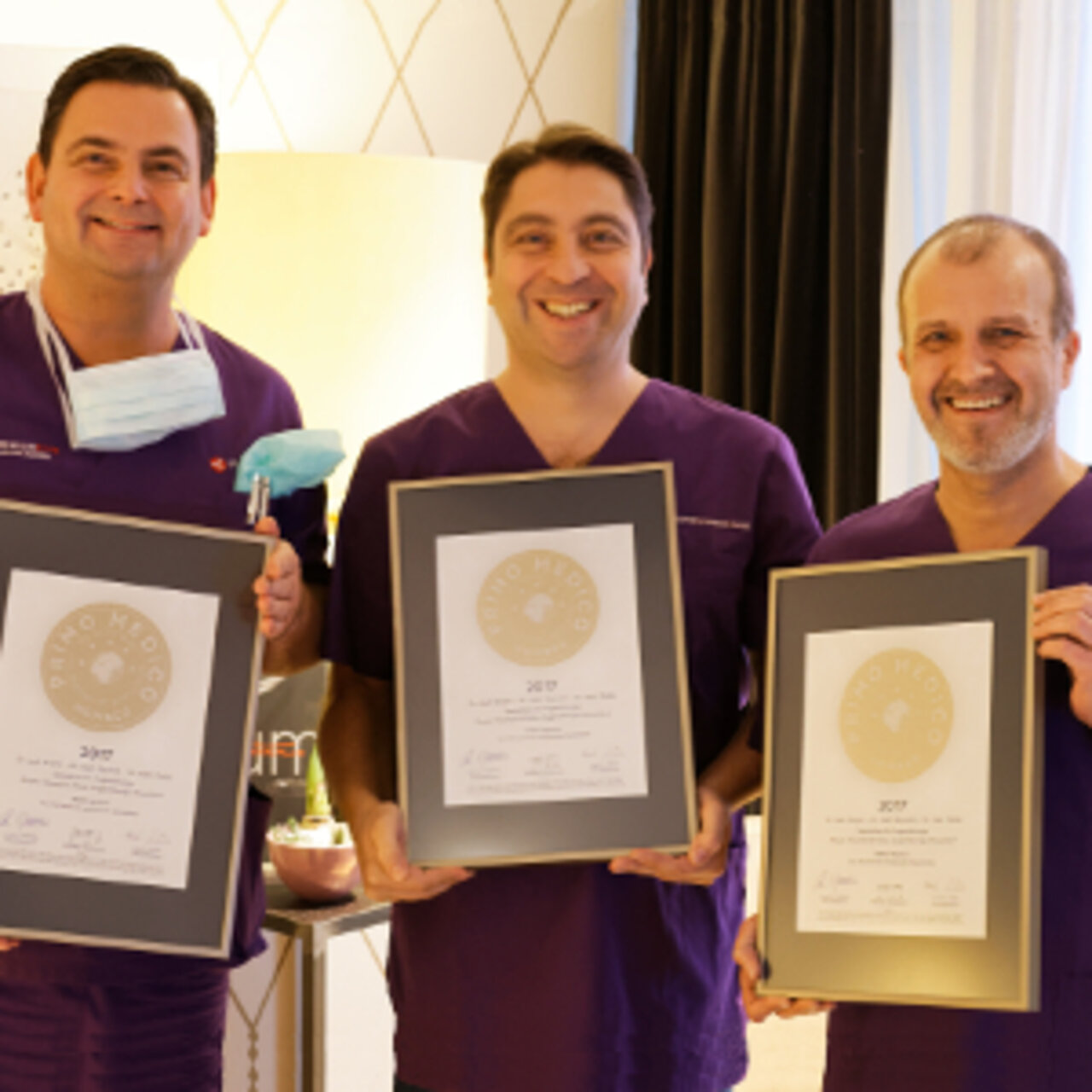Specialists in IPL therapy (eyes)
2 Specialists found
Information About the Field of IPL therapy (eyes)
What is IPL light therapy?
IPL is short for 'Intense Pulsed Light'. It refers to therapy which uses intense pulses of light emitted by a flash lamp. The light produces various effects, such as on the vessels, glands and immune cells of the irradiated skin.
For several decades, this form of treatment has already been utilized for skin diseases such as rosacea and acne, or for cosmetic hair removal. It was only in the last decade that IPL light therapy became established for the treatment of dry eyes.
Who is suitable for IPL treatment?
Anyone suffering from dry eyes for longer than four weeks, which does not improve with treatment using moisturizing eye drops, needs to see a doctor to investigate the cause of this symptom. Although the symptoms can be controlled sufficiently with eye drops, a diagnosis may still be useful as, depending on the results of the medical history and examination, the cause of the symptoms can usually be addressed.
Chronic dry eyes can have various causes. Among the most common causes is a dysfunction of the meibomian glands along the edge of the eyelid. These glands produce sebum, which is then released into the tear film. Up to 20% of people in European and North American countries are affected by a dysfunction of these glands, while in Asian countries the rate is as high as 70%.
The oily secretion of the meibomian glands helps to stabilize the film of tear fluid coating the eye, distributed with each blink, and delays its evaporation. Without this secretion, or if its production is reduced, the patient suffers from symptoms of dry eyes. They include
stinging, scratching or burning of the eye
increased light sensitivity
foreign body sensation
reddened eyes
blurred vision
Meibomian gland dysfunction can be effectively treated with IPL. It may be caused by eyelid inflammation (blepharitis) or by working too much in front of a monitor. A so-called meibography, during which the eye specialist takes an image of the meibomian glands under infrared light with the help of a special camera, can be used to diagnose a disorder.
There are, however, other causes of dry eyes that cannot be treated with IPL light therapy. These include allergies, taking certain medications or a vitamin A deficiency.
What is the precise effect of IPL light therapy?
Even though clinical studies have proven the effectiveness of the therapy, its precise mechanism of action has not yet been fully explained. There are discussions about several positive effects of the light pulses. Some of the most important ones are
warming of the meibomian glands, thereby increasing production and release of secretions
destruction of telangiectasias (permanently distended small blood vessels), thereby reducing the effect of inflammatory mediators on the meibomian glands
improvement of different cellular functions, including collagen synthesis, fibroblast regeneration and immune cell mobilization, thereby contributing to the normal function of the eye
killing demodex mites (parasites found on the skin of around 90% of people which, in high concentrations, can trigger or promote inflammatory processes)
What happens during IPL light therapy at the eye specialist?
IPL light therapy for the treatment of dry eyes is divided into three to four sessions every several weeks. For each session, the patient's eyes are protected by goggles and ultrasound gel is applied to the skin around both eyes. This acts as a conductor for the IPL light. Then, several pulses of light are delivered to the skin underneath and to the side of the eyes using a flash lamp about the size of a hand. The physician also wears protective goggles.
To maximize the success of the treatment, the eye doctor can then mechanically squeeze the meibomian glands with a cotton swab.
After undergoing IPL therapy, the facial skin should be protected with sunscreen for 48 hours.
What are the costs of IPL light therapy?
The total cost of IPL light therapy, including medical consultation and all sessions, ranges from around €800 to €1200, depending on the clinic. Public health insurance companies currently do not cover the costs of this fairly new therapy. Private health insurance companies, however, usually pay for IPL therapy to treat dry eyes.
What are the advantages, disadvantages and risks?
Having dry eyes is not only annoying for patients, in the worst case it can also provoke dangerous complications.
Our eyes are protected from pathogens by the tear film, so dry eyes can promote infections. Moreover, severe dryness of the eyes can result in damage to the cornea, leading to impaired vision and even blindness. This is why dry eyes should be treated. Unlike eye drops, IPL therapy treats not only the symptoms but also the cause of the condition. The success of the treatment lasts up to 6 years.
There is no damage caused by UV light during treatment as these light spectra are filtered by the IPL device.
One major disadvantage of this therapy is that the light reacts with pigments in the skin and can destroy heavily pigmented areas of skin. Patients with naturally highly pigmented skin and patients with tattoos on the face therefore should not undergo this treatment.
Which doctors & clinics specialize in IPL therapy?
If you wish to undergo IPL therapy to treat dry eyes, your ophthalmologist is the right person to contact. They can carry out a test beforehand to identify the cause of the dry eyes and whether IPL therapy is likely to work. Based on the results, they can then carry out the therapy themselves.
However, not all ophthalmology offices are equipped with an IPL device and there are some ophthalmologists who are not familiar with this relatively new treatment option. You should therefore consult an ophthalmologist with sufficient expertise in the field of IPL.
If you're in need of a doctor, you expect the best medical care possible. So of course patients are curious to find out what clinic to go to. As there is no objective way to answer this question and a legitimate doctor would never claim to be the best, patients must rely on a doctor's experience.
Let us help you find an expert for your condition. All listed doctors and clinics have been reviewed by us for their outstanding specialization in the field of IPL therapy (eyes) and are looking forward to your inquiry or wish for treatment.
Sources:

